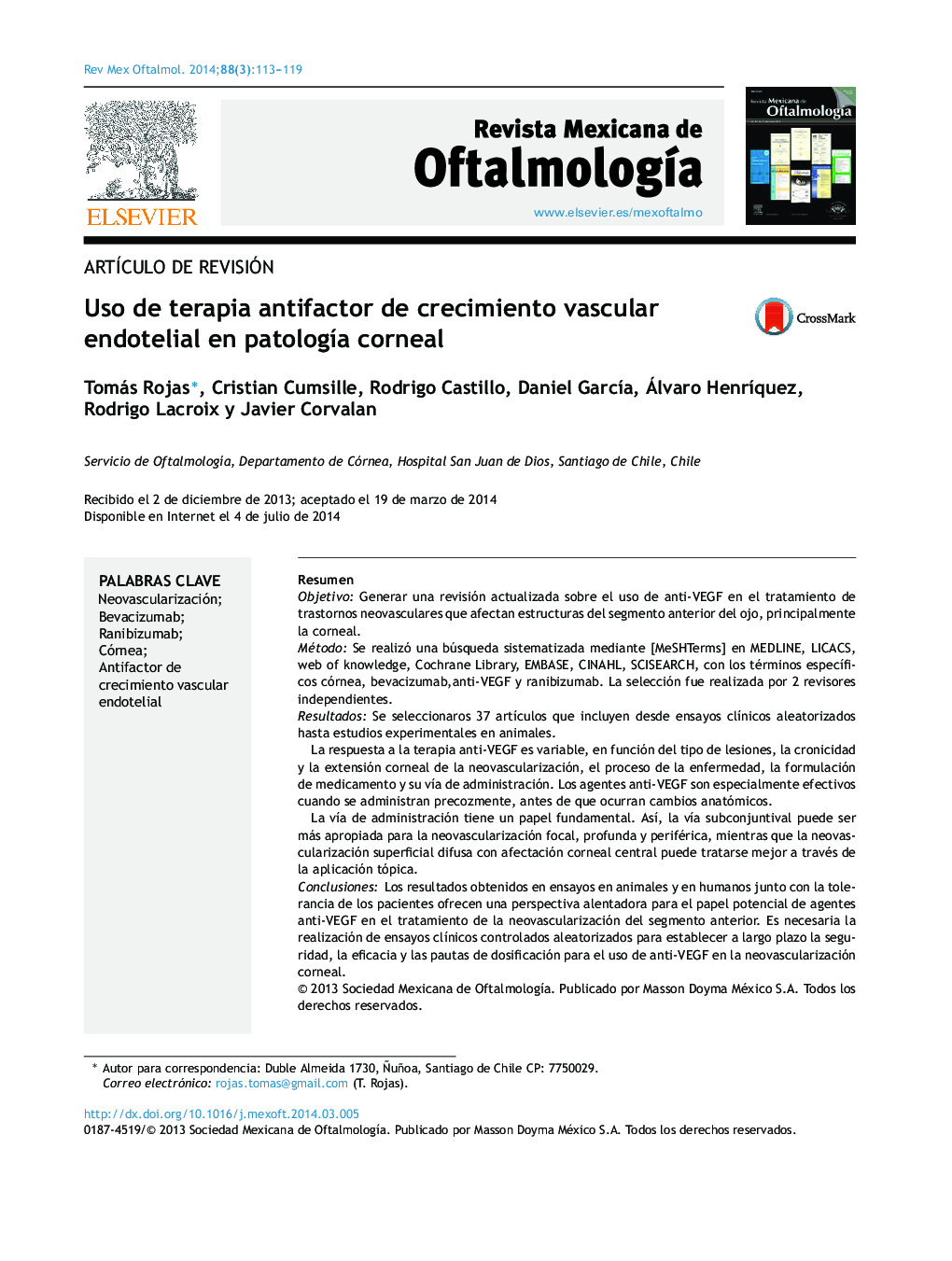| کد مقاله | کد نشریه | سال انتشار | مقاله انگلیسی | نسخه تمام متن |
|---|---|---|---|---|
| 4032315 | 1263044 | 2014 | 7 صفحه PDF | دانلود رایگان |
ResumenObjetivoGenerar una revisión actualizada sobre el uso de anti-VEGF en el tratamiento de trastornos neovasculares que afectan estructuras del segmento anterior del ojo, principalmente la corneal.MétodoSe realizó una búsqueda sistematizada mediante [MeSHTerms] en MEDLINE, LICACS, web of knowledge, Cochrane Library, EMBASE, CINAHL, SCISEARCH, con los términos específicos córnea, bevacizumab,anti-VEGF y ranibizumab. La selección fue realizada por 2 revisores independientes.ResultadosSe seleccionaros 37 artículos que incluyen desde ensayos clínicos aleatorizados hasta estudios experimentales en animales.La respuesta a la terapia anti-VEGF es variable, en función del tipo de lesiones, la cronicidad y la extensión corneal de la neovascularización, el proceso de la enfermedad, la formulación de medicamento y su vía de administración. Los agentes anti-VEGF son especialmente efectivos cuando se administran precozmente, antes de que ocurran cambios anatómicos.La vía de administración tiene un papel fundamental. Así, la vía subconjuntival puede ser más apropiada para la neovascularización focal, profunda y periférica, mientras que la neovascularización superficial difusa con afectación corneal central puede tratarse mejor a través de la aplicación tópica.ConclusionesLos resultados obtenidos en ensayos en animales y en humanos junto con la tolerancia de los pacientes ofrecen una perspectiva alentadora para el papel potencial de agentes anti-VEGF en el tratamiento de la neovascularización del segmento anterior. Es necesaria la realización de ensayos clínicos controlados aleatorizados para establecer a largo plazo la seguridad, la eficacia y las pautas de dosificación para el uso de anti-VEGF en la neovascularización corneal.
ObjectiveTo generate an updated review on the use of anti-VEGF for the treatment of neovascular disorders affecting structures in the anterior segment of the eyeball, especially the cornea.MethodA systematic research was performed on MEDLINE, LICACS, web of knowledge, Cochrane Library, EMBASE, CINAHL and SCISEARCH using the MeSH Terms cornea, bevacizumab, anti-VEGF and ranibizumab. The selection was made by 2 independent reviewers.ResultsThirty-seven articles were selected ranging from randomized clinical trials to experimental animals studies.The response to the anti-VEGF therapy is variable depending on the type of lesion, chronicity and the corneal extension of the neovascularization, course of the illness, drug formulation, and route of administration. The anti-VEGF agents are specially effectives when administrated early in an early state of the illness, before anatomical alterations occur.The route of administration plays a significant role. The subconjunctival route might be more appropriate for the focal, deep and peripheral neovascularization, while cases of diffuse and superficial neovascularization with central corneal affectation may be best treated with topical application.ConclusionsThe results obtained from the human and animal trials along with the tolerance of the patients provide a promising perspective for the potential role of anti-VEGF agents in the treatment of anterior segment neovascularization. Randomized controlled trials are needed to establish long-term safety, efficacy and dosing guidelines for the use of anti-VEGF in the treatment of corneal neovascularization.
Journal: Revista Mexicana de Oftalmología - Volume 88, Issue 3, July–September 2014, Pages 113–119
